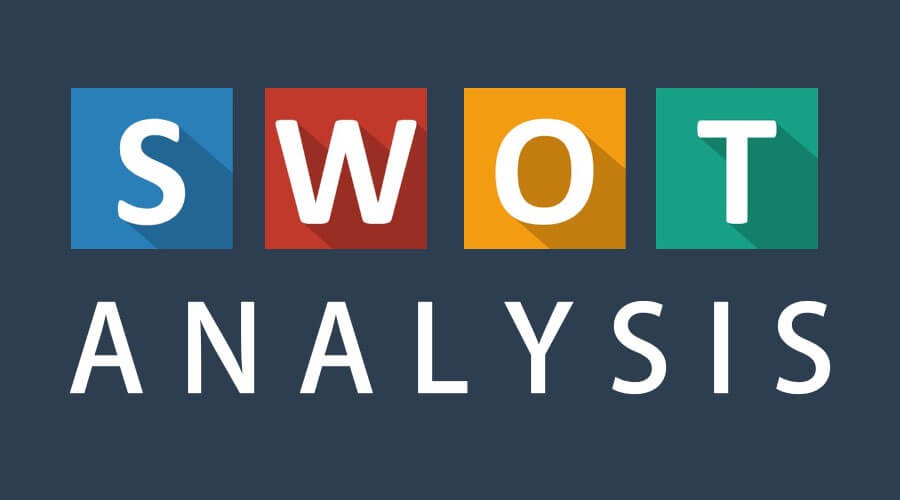Conducting a SWOT analysis is a crucial step for businesses aiming to understand their strategic position and also identify opportunities for growth. SWOT, which stands for Strengths, Weaknesses, Opportunities, and Threats, provides a comprehensive framework for evaluating a company’s internal as well as external environment. By conducting a SWOT analysis, businesses can develop effective strategies to leverage their strengths, address weaknesses, capitalize on opportunities, and mitigate threats. Let’s go over the essential steps and strategies involved in conducting a thorough SWOT analysis.
Identifying Strengths
Identifying strengths is the first step in conducting a SWOT analysis. Strengths are the internal attributes and resources that give a company a competitive advantage. These may include unique skills, strong brand reputation, loyal customer base, proprietary technology, or efficient processes. By understanding their strengths, businesses can leverage them to enhance their market position and achieve their objectives.
Moreover, it is crucial to involve various stakeholders in identifying strengths. Gathering input from employees, customers, and partners provides a holistic view of the company’s capabilities. Regularly reviewing as well as updating strengths ensures that the analysis remains relevant and also reflects the current state of the business. By identifying and leveraging strengths, companies can build a solid foundation for strategic planning.
Recognizing Weaknesses
Recognizing weaknesses is an essential aspect of conducting a SWOT analysis. Weaknesses are internal factors that hinder a company’s performance and competitiveness. These may include limited resources, lack of expertise, poor infrastructure, or inefficient processes. Identifying weaknesses helps businesses understand areas that need improvement and also develop strategies to address them.
Furthermore, it is important to approach this step with honesty and objectivity. Acknowledging weaknesses may be challenging, but it is necessary for growth and development. Seeking feedback from stakeholders can provide valuable insights into perceived weaknesses. By recognizing and addressing weaknesses, businesses can strengthen their operations and enhance their competitive edge.
Exploring Opportunities
Exploring opportunities is a critical component of conducting a SWOT analysis. Opportunities are external factors that can positively impact a company’s growth and success. These may include emerging markets, technological advancements, regulatory changes, or shifting consumer preferences. Identifying opportunities helps businesses stay ahead of industry trends and capitalize on favorable conditions.
Additionally, conducting market research as well as staying informed about industry developments is essential for identifying opportunities. Engaging with customers, attending industry conferences, and monitoring competitors provide valuable information. By exploring and seizing opportunities, businesses can drive innovation and also achieve sustainable growth.
Assessing Threats
Assessing threats is a vital step in conducting a SWOT analysis. Threats are external factors that could negatively impact a company’s performance and stability. These may include economic downturns, increasing competition, changing regulations, or technological disruptions. Identifying threats allows businesses to develop contingency plans as well as mitigate potential risks.
Moreover, continuously monitoring the external environment is crucial for staying informed about emerging threats. Conducting regular risk assessments and scenario planning helps businesses prepare for various contingencies. By assessing and addressing threats, companies can safeguard their operations and maintain resilience in a dynamic market.
Integrating SWOT Analysis into Strategic Planning
Integrating SWOT analysis into strategic planning enhances its effectiveness and relevance. The insights gained from conducting a SWOT analysis provide a solid foundation for developing actionable strategies. Aligning strengths with opportunities creates pathways for growth, while addressing weaknesses and also mitigating threats ensures long-term sustainability.
Furthermore, involving key stakeholders in the strategic planning process ensures that the insights from the SWOT analysis are comprehensive and actionable. Regularly revisiting and updating the analysis allows businesses to stay responsive to changing conditions. By integrating SWOT analysis into strategic planning, companies can create robust and also adaptable strategies that drive success.
Leveraging Strengths and Opportunities
Leveraging strengths as well as opportunities is essential for maximizing the benefits of conducting a SWOT analysis. Businesses should focus on areas where their strengths align with market opportunities. This alignment enables them to create unique value propositions and differentiate themselves from competitors. For instance, a company with strong research and development capabilities can capitalize on technological advancements to innovate and launch new products.
Additionally, investing in marketing and branding can help businesses highlight their strengths and attract new customers. By consistently leveraging their strengths and opportunities, companies can enhance their market position and achieve sustained growth.
Addressing Weaknesses and Threats
Addressing weaknesses and threats is crucial for minimizing risks and enhancing resilience. Businesses should develop strategies to mitigate their weaknesses and protect against external threats. This may involve investing in employee training, upgrading technology, improving processes, or diversifying product offerings. By proactively addressing weaknesses, companies can improve their operational efficiency and competitiveness.
Furthermore, developing contingency plans and risk management strategies helps businesses navigate uncertainties and respond effectively to threats. Regularly reviewing as well as updating these strategies ensures that they remain relevant and effective. By addressing weaknesses and threats, companies can build a strong foundation for long-term success.
Measuring Success and Continuous Improvement
Measuring success and continuous improvement are integral to the ongoing relevance of conducting a SWOT analysis. Businesses should establish key performance indicators (KPIs) to track progress and evaluate the effectiveness of their strategies. Regularly reviewing these metrics provides insights into areas of success and opportunities for improvement.
Additionally, fostering a culture of continuous improvement encourages innovation and adaptability. By regularly conducting SWOT analyses, businesses can stay informed about changing conditions and also refine their strategies accordingly. This iterative process ensures that the company remains agile and responsive in a dynamic market.
Conclusion
Conducting a SWOT analysis is a vital tool for strategic planning and decision-making. By identifying strengths, recognizing weaknesses, exploring opportunities, and assessing threats, businesses can develop effective strategies to achieve their goals. Understanding and integrating SWOT analysis into strategic planning enhances its value and impact. Leveraging strengths and opportunities, addressing weaknesses and threats, as well as fostering continuous improvement ensures that businesses remain competitive and resilient.
In conclusion, mastering the process of conducting a SWOT analysis is essential for any business aiming to thrive in today’s competitive environment. Embrace this framework to enhance your strategic planning efforts and drive long-term success. By continuously refining and updating your SWOT analysis, you can stay ahead of the competition and also seize new opportunities for growth.


